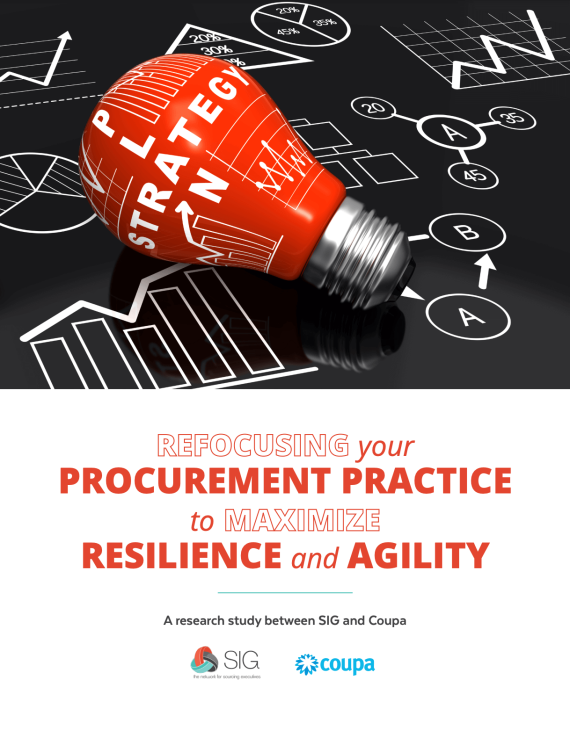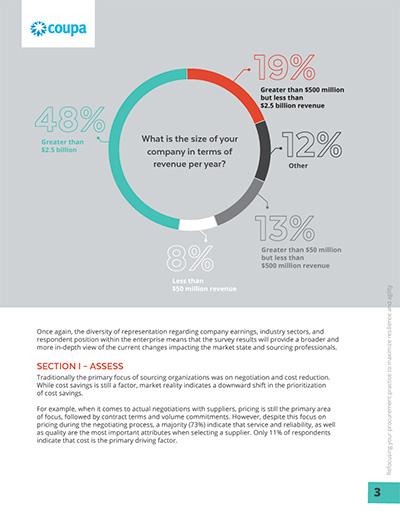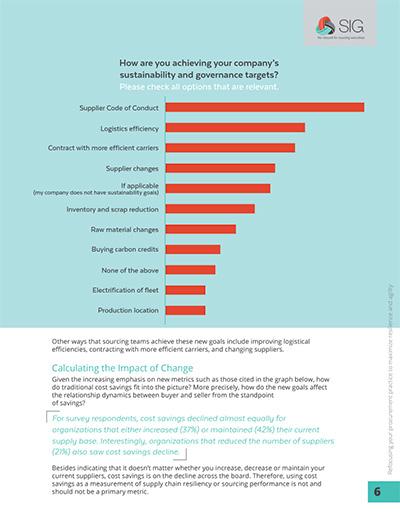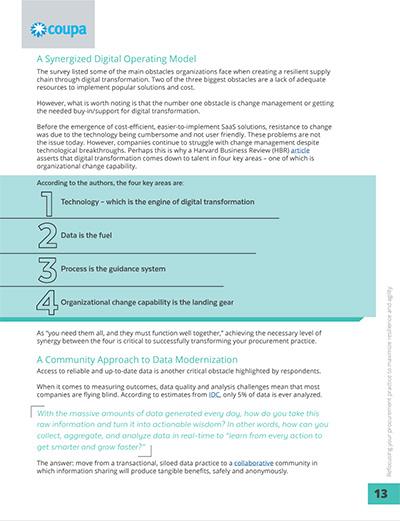Refocusing Your Procurement Practices to Maximize Resilience and Agility
SIG summarizes the results of its survey of 100 sourcing professionals and their solutions to thriving in the new business world by reshaping procurement practices.
Resilience & Digital Transformation are on the Procurement Executive's Agenda
The SIG survey provides help for procurement teams in three main areas:
- How to assess the procurement process beyond traditional cost savings
- Procurement performance metrics
- How digital transformation of procurement helps organizations achieve social and financial objectives
Companies are increasing the expectations they set for their procurement and supply chain teams in order to encourage changes that will improve the agility and resilience of their strategic sourcing processes. Procurement teams must react quickly to changes, make rapid decisions as inputs change, and ensure that they incorporate their objectives for sustainability and compliance in their sourcing processes. This white paper summarizes the changes that procurement and sourcing teams are making to digitize their processes and thereby boost agility and resilience.
FAQ
advisors who serve them. SIG is widely known as a forum for sharing “next” practices and thought leadership through live networking events, virtual forums, and a comprehensive online SIG resource center (SRC) developed by and for professionals in sourcing and outsourcing. The organization is unique because it blends practitioners, service providers and advisory firms in a non-commercial environment. SIG is also the parent organization for SIG University, which offers a one-of-a-kind certification and training program for professionals and executives seeking deep expertise in sourcing and governance for themselves or their teams.
SIG also publishes the Future of Sourcing, which provides unrivaled digital content for the opinion-formers and decision-makers at the heart of the outsourcing space.
To learn more about SIG, visit www.sig.org or follow us on LinkedIn or Twitter.



